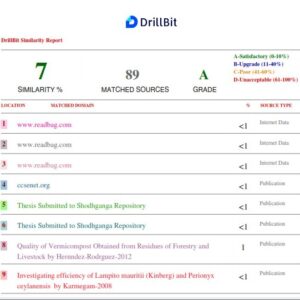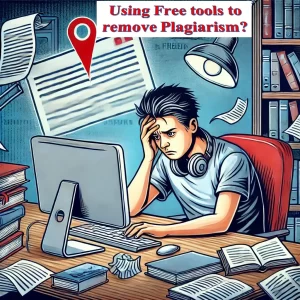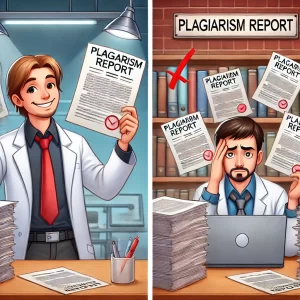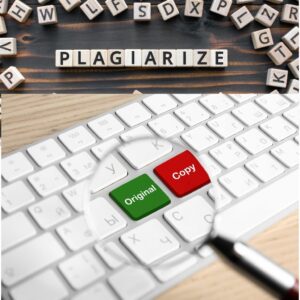
From Detection to Correction-A Step-by-Step Guide to Removing Plagiarism
Plagiarism, whether intentional or accidental, can be damaging to both academic and professional credibility. Fortunately, it’s possible to correct plagiarism once it’s identified, restoring the integrity of your work and ensuring it reflects your own voice and original thought. This step-by-step guide will walk you through the process of detecting, assessing, and correcting plagiarism to produce a piece that is both ethical and authentic.
Step 1: Detect Plagiarism Using Reliable Tools
The first step in correcting plagiarism is detecting it accurately. Plagiarism detection tools like Turnitin, Drillbit, Grammarly, Quetext, and Copyscape can help identify sections that match existing texts. These tools highlight duplicate content and sometimes provide a “similarity percentage” to indicate the extent of plagiarism. Always review flagged sections carefully—sometimes, these tools may highlight commonly used phrases or terms that don’t need to be changed. Focus on areas where substantial similarity with other sources is detected and pay special attention to sections lacking citations.
Step 2: Understand the Nature of the Plagiarism
Once you’ve identified plagiarized sections, assess the type of plagiarism. Different forms of plagiarism require different corrective strategies:
- Direct Copying: Directly copying another author’s work without quotation marks or citation.
- Improper Paraphrasing: Rephrasing too closely to the original structure or wording.
- Self-Plagiarism: Reusing parts of your own previous work without disclosure.
- Accidental Plagiarism: Failing to cite sources due to oversight or poor note-taking.
Understanding the nature of the plagiarism will help you decide whether you need to rephrase, add citations, or rewrite sections entirely.
Step 3: Revise by Paraphrasing or Summarizing
For sections that involve improper paraphrasing or direct copying, focus on rewriting the text in your own words while keeping the original meaning. This means expressing the ideas in a way that reflects your own understanding and perspective, not just swapping words. To paraphrase effectively, read the source text carefully, set it aside, and write your interpretation from memory. This approach helps ensure that your language and structure differ from the original. Summarize longer sections, capturing the main ideas in a condensed form without copying phrases.
Step 4: Add Proper Citations and Quotations
If the plagiarized sections contain ideas or phrases from other sources, add proper citations to credit the original authors. This includes adding references for direct quotes, paraphrased ideas, and even for summarized sections if they draw heavily from specific sources. Be sure to follow the required citation style (APA, MLA, Chicago, etc.). Citation management tools like Zotero or EndNote can help you organize references and insert them correctly.
- Direct Quotations: Use quotation marks for short quotes or block formatting for longer quotes, and include an in-text citation.
- Paraphrasing and Summarizing: Even if you’ve rewritten the text, you should still cite the source, as the ideas are not originally yours.
Step 5: Ensure Consistency and Accuracy in Citations
Consistent and accurate citation is crucial to avoid plagiarism. Review all citations to ensure they match your style guide, are complete, and correspond to entries in your bibliography or reference list. This step is essential in making sure that all outside contributions are properly acknowledged. Check each citation to ensure that it includes all required information (such as author, title, publication date, etc.) and is formatted correctly. Consistency in citation style builds credibility and demonstrates attention to detail.
Step 6: Run a Final Check for Originality
After making revisions, run your document through a plagiarism detection tool one more time. This final check helps confirm that all plagiarized content has been removed or properly cited and that your revisions have sufficiently differentiated your work from the original sources. Focus on sections with high similarity scores and ensure any remaining flagged text is either quoted properly or sufficiently paraphrased. If the tool continues to highlight common phrases that are unavoidable, this may not be an issue, but make sure all key sections are unique and properly attributed.
Step 7: Reflect on Your Learning Process
Correcting plagiarism provides an opportunity to develop better research and writing skills. Reflect on the reasons behind the plagiarism, whether it was unintentional due to poor note-taking, or accidental self-plagiarism. Use these insights to improve your approach to research, note-taking, and writing for future projects. Consider adopting better note-taking methods or using project management tools to keep track of sources and ideas. These practices will help you avoid plagiarism in the future and enhance the originality of your work.
Step 8: Develop and Practice Good Writing Habits
Establishing strong writing habits is essential for avoiding plagiarism in future work. Here are a few strategies to develop:
- Take Notes Effectively: When researching, note down the source and key points for each idea you encounter.
- Write in Your Own Words First: Draft each section of your paper based on your understanding of the material, then refer back to the sources only to confirm details.
- Use Drafts and Revisions: Don’t rush through your paper. Allow time for multiple drafts and revisions, focusing on refining your original arguments and removing any phrases that seem too close to your sources.
Step 9: Seek Guidance When Needed
If you’re ever unsure about how to cite a source or paraphrase effectively, don’t hesitate to seek help. Academic writing centers, professors, and online resources are available to support you in maintaining integrity in your work. Addressing questions early on can save you time and prevent errors in the long run. Many universities offer writing workshops or tutorials on citation and plagiarism. Attending these can help reinforce ethical practices and provide practical tools for avoiding plagiarism.
Conclusion
Avoiding and correcting plagiarism is essential for maintaining academic and professional integrity. By following this step-by-step process, you can confidently remove plagiarized content, properly attribute ideas, and strengthen the originality of your work. Committing to ethical writing practices not only protects your academic reputation but also cultivates skills in research, critical thinking, and communication that will benefit you throughout your career. With diligent effort, plagiarism becomes an avoidable obstacle, allowing you to present work that truly reflects your knowledge and creativity.


